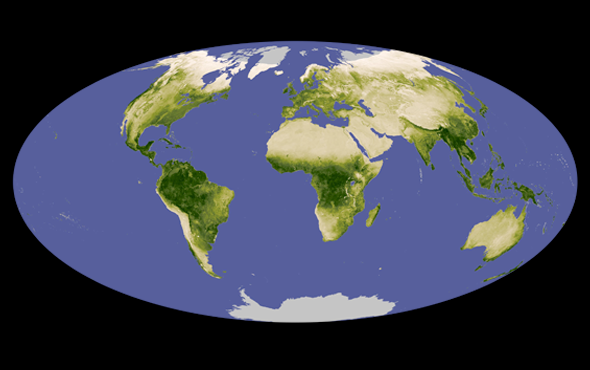This illustration shows the location of the C-19 stellar stream (orange, vertical stream of stars in lower left), which was recently discovered at the edge of our Milky Way Galaxy. Observations using the Gemini North telescope — part of the international Gemini Observatory, a Program of NSF’s NOIRLab — reveal that the stars in this stream were once part of an ancient globular star cluster that was torn apart by gravitational interactions with our galaxy. The Large Magellanic Cloud and Small Magellanic Cloud (satellite galaxies of the Milky Way) appear in the lower right. Credit: International Gemini Observatory/NOIRLab/NSF/AURA/J. da Silva/Spaceengine, Acknowledgment: M. Zamani (NSF’s NOIRLab)
98.5% of the Sun is made up of two light chemical elements, hydrogen and helium, while the remaining 1.5% consists of other heavier elements such as carbon, oxygen, and iron. The abundance of these heavier elements in a star is called its ‘metallicity’, and varies from star to star. It now turns out that our Galaxy is home to a stellar structure uniquely made of stars with extremely low metallicity, with a heavy element content 2,500 times lower than that of the Sun. This is well below that of any other known stellar structure in the Universe.
This discovery, made by an international team led by a CNRS researcher at the Strasbourg Astronomical Observatory (CNRS / University of Strasbourg), and involving scientists from the Galaxies, Stars, Physics and Instrumentation Laboratory (Paris Observatory – PSL / CNRS) and at the J-L Lagrange Laboratory (CNRS / Côte d’Azur Observatory), is published on January 5, 2022, in the journal Nature.
Credit: Distribution of very dense groups of stars in the Milky Way, called globular clusters, superimposed on a map of the Milky Way compiled from data obtained with the Gaia Space Observatory. Each dot represents a cluster of a few thousand to several million stars, as in the insert image of the Messier 10 cluster. The colour of the dots shows their metallicity, in other words, their abundance of heavy elements relative to the Sun. The C-19 stars are indicated by the light blue symbols. Credit: © N. Martin / Strasbourg Astronomical Observatory / CNRS; Canada-France-Hawaii Telescope / Coelum; ESA / Gaia / DPAC
This group of stars all belong to a stellar structure in the Milky Way called C-19. Not only does this discovery challenge our current understanding and models of the formation of these stellar groupings, which exclude the existence of structures composed only of such stars, it also opens a unique and direct window onto the very earliest ages of star formation and the development of stellar structures in the very distant past. Since heavy elements were produced by successive generations of massive stars, the very low metallicity of the C-19 stars shows that they were formed only a short time after the birth of the Universe.
For more on this discovery, see Ruins of Ancient Star Cluster Discovered at the Fringes of Our Galaxy.
Reference: “A stellar stream remnant of a globular cluster below the metallicity floor” by Nicolas F. Martin, Kim A. Venn, David S. Aguado, Else Starkenburg, Jonay I. González Hernández, Rodrigo A. Ibata, Piercarlo Bonifacio, Elisabetta Caffau, Federico Sestito, Anke Arentsen, Carlos Allende Prieto, Raymond G. Carlberg, Sébastien Fabbro, Morgan Fouesneau, Vanessa Hill, Pascale Jablonka, Georges Kordopatis, Carmela Lardo, Khyati Malhan, Lyudmila I. Mashonkina, Alan W. McConnachie, Julio F. Navarro, Rubén Sánchez-Janssen, Guillaume F. Thomas, Zhen Yuan and Alessio Mucciarelli, 5 January 2022, Nature.
DOI: 10.1038/s41586-021-04162-2
This work was carried out as part of the Pristine survey, with ESA’s Gaia space observatory, the Canada-France-Hawaii Telescope (Hawaii), the Gemini North telescope (Hawaii) and the GTC telescope (Canary Islands).
Note: This article have been indexed to our site. We do not claim legitimacy, ownership or copyright of any of the content above. To see the article at original source Click Here













